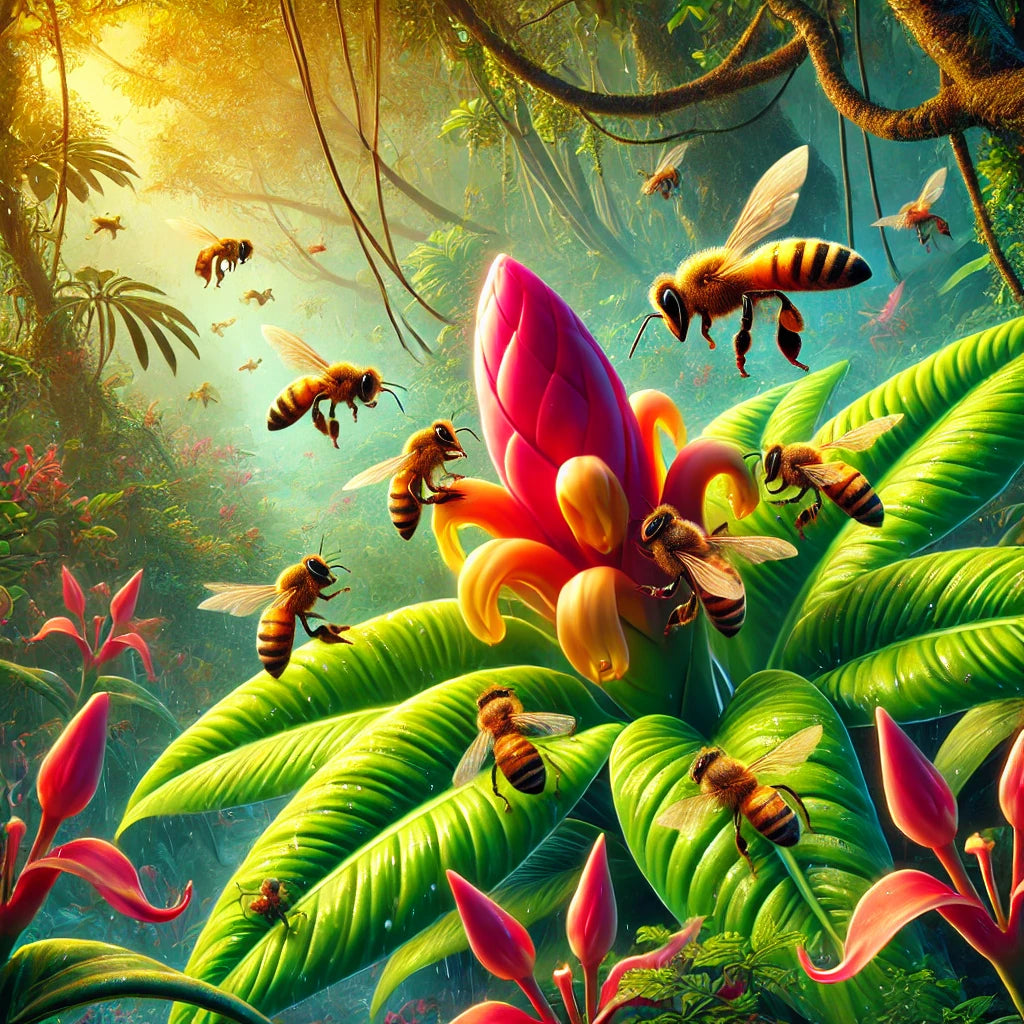Extrafloral nectaries (EFNs) are unique structures found on plants like the Philodendron that secrete nectar outside the flower. While floral nectaries exist to attract pollinators, extrafloral nectaries serve a different function—they attract insects such as ants and wasps, which defend the plant from herbivores.
These structures are a form of plant protection rather than a pollination aid, making them an interesting survival mechanism for plants like the Philodendron.
How Extrafloral Nectaries Work in the Philodendron
In Philodendrons, extrafloral nectaries can be found on leaves and stems, producing nectar that entices protective insects rather than pollinators. In exchange for the food source provided by the plant, these insects patrol the plant, warding off potential threats like caterpillars and other herbivores. This mutualistic relationship is critical to plant survival in environments where insect predators are common.
Though these nectaries do not play a role in pollination, they still attract bees, flies, and other nectar-eating insects, which benefit from this extra source of sustenance, much like how bees are drawn to floral nectaries. This allows the plant to attract a diverse group of visitors while maintaining protection from herbivorous insects.
Extrafloral Nectaries: A Lesser-Known Nectar Source for Bees
While bees typically visit flowers to collect nectar and pollen, they may also take advantage of extrafloral nectaries. These nectar sources, often found on non-floral parts of the plant, provide a supplemental food source for bees, especially during periods when fewer flowers are blooming. This makes EFNs an unexpected yet valuable nectar source that bees, like those in honey bee swarms, can tap into.
The Benefits of Bees and Their Role in Pollination
While extrafloral nectaries offer protection to plants, the relationship between bees and traditional floral nectaries is well understood. Bees are vital to agriculture because they help in the pollination of numerous crops. For example, beekeepers looking to support crop pollination can explore how to start a bee farm and use products like bee trap attractants to guide bees towards specific plants. This practice not only benefits agriculture but also helps maintain healthy bee populations.
Support Your Garden’s Defenders with Swarm Commander
Extrafloral nectaries, like those found in Philodendrons, play a fascinating role in plant survival by attracting protective insects. While these nectaries do not directly assist in pollination, they provide a nectar source that can be useful to nectar-eating insects like bees. Understanding the diverse roles of nectaries in plants can help gardeners and farmers better protect their crops and support pollinator health. If you’re interested in beekeeping or helping plants thrive, consider using tools like Swarm Commander to manage bee populations and support healthy plant-insect interactions.
Enhance the health of your plants and pollinators by using Swarm Commander products. Our solutions, like beetle traps for beehives, help promote a healthy and thriving ecosystem. Visit Swarm Commander today to explore our range of tools and resources for beekeepers and gardeners!
Frequently Asked Questions About Extrafloral Nectaries
Q1. What are extrafloral nectaries?
Extrafloral nectaries are nectar-secreting structures located outside the flowers of a plant, typically on leaves or stems. They attract protective insects rather than pollinators.
Q2. How do extrafloral nectaries benefit plants like the Philodendron?
Extrafloral nectaries attract insects like ants that help defend the plant from herbivores, offering a form of protection instead of aiding in pollination.
Q3. Do bees visit extrafloral nectaries?
Yes, while bees primarily seek nectar from flowers, they may visit extrafloral nectaries as a supplemental food source, especially during times of low flower availability.
Q4. What’s the difference between floral and extrafloral nectaries?
Floral nectaries exist to attract pollinators, while extrafloral nectaries attract insects that help protect the plant from herbivores.



